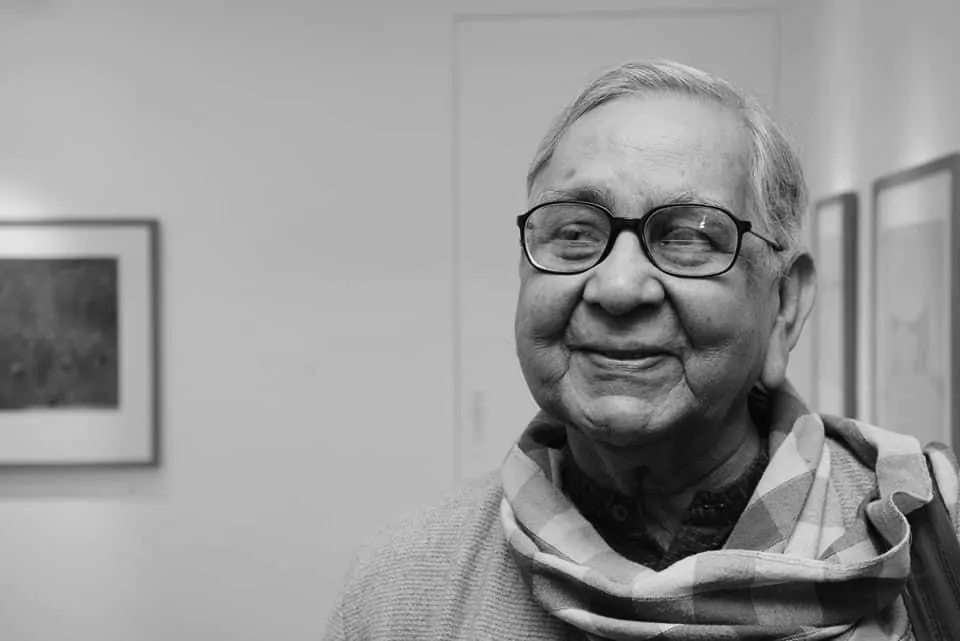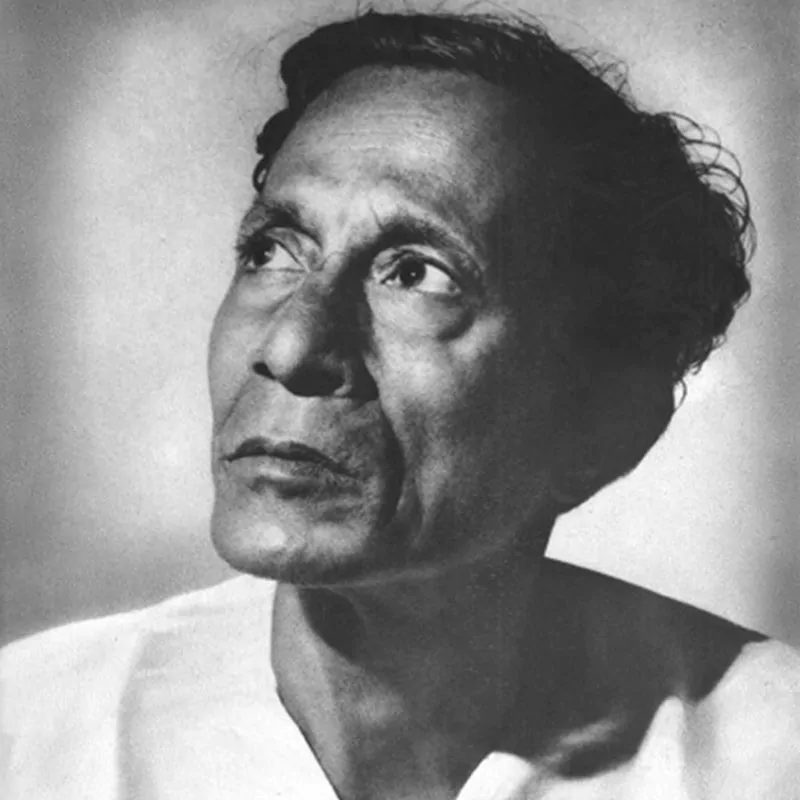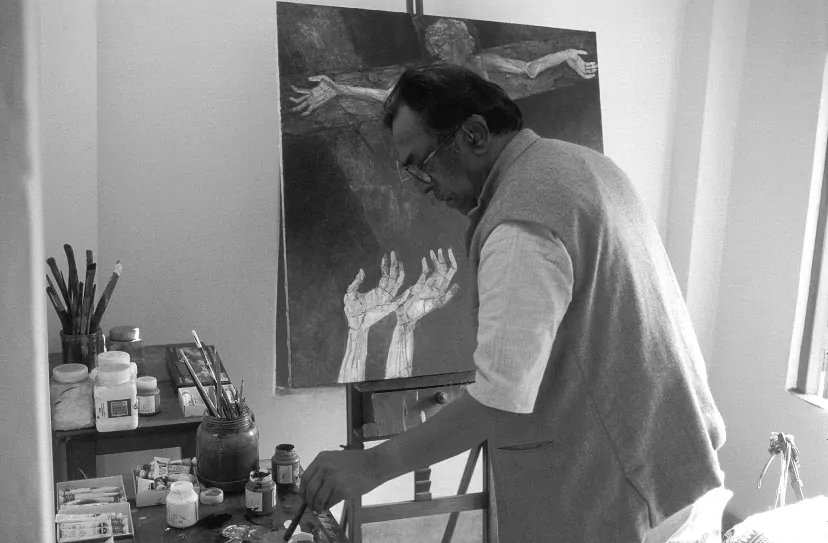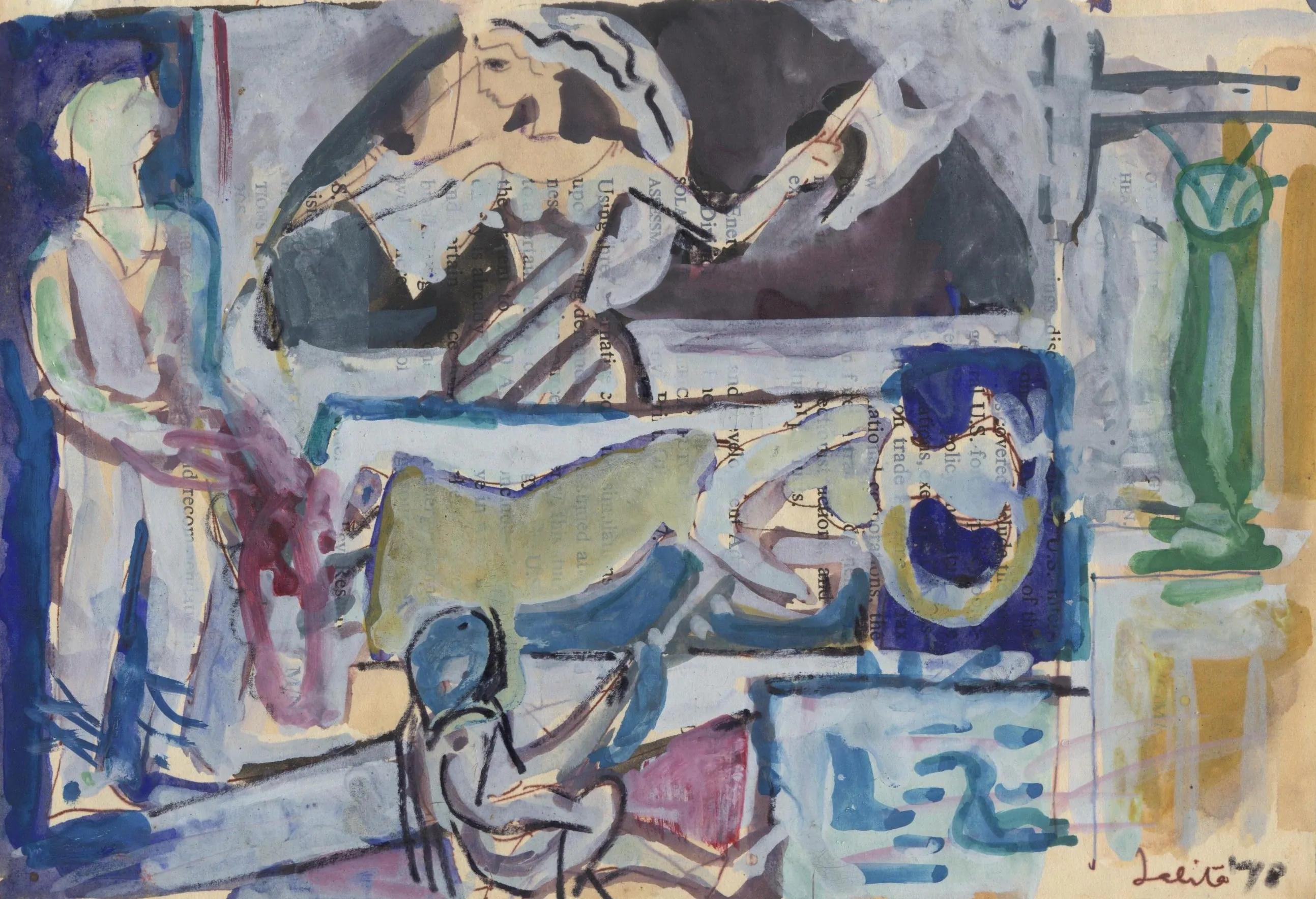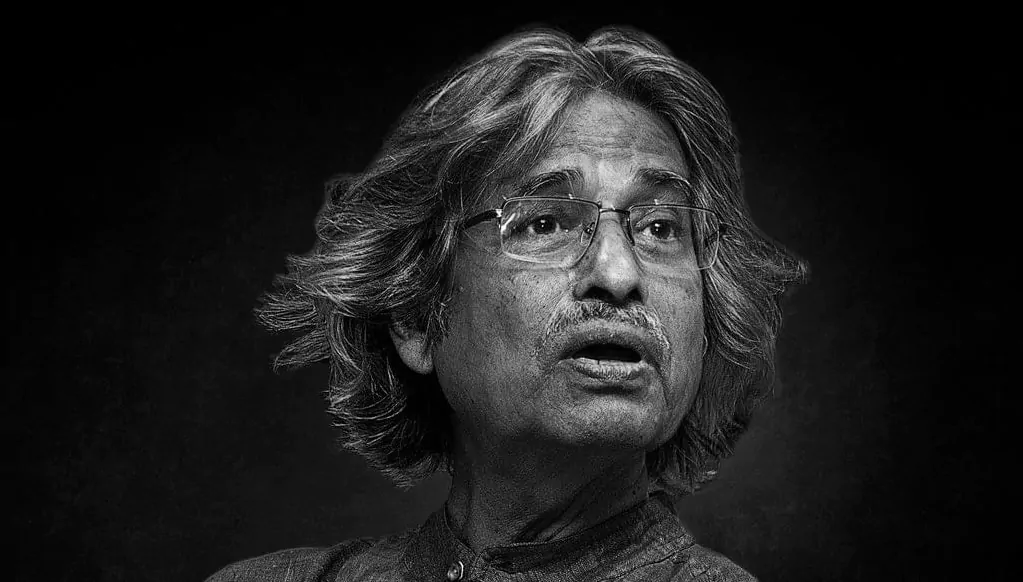Nikhil Biswas: A Forgotten Genius.
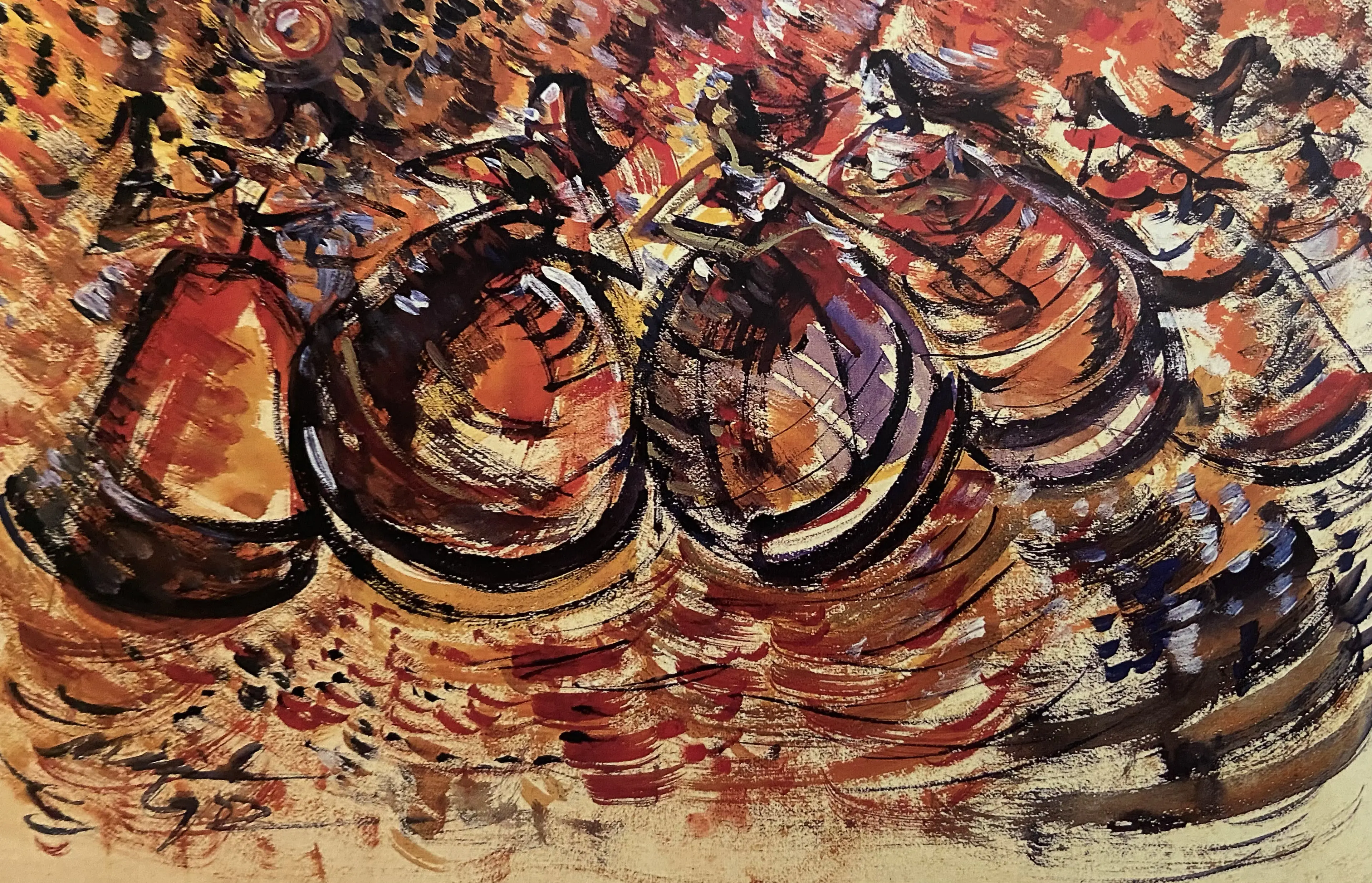
When Nikhil Biswas died at the age of 36 in 1966,the art world was robbed by a shining star. His death came as a huge shock to the world of art & culture.Now regarded as one of the major figures of Indian contemporary art of the post-independence period,he along with Shyamal Dutta Roy, Sudhir Bairagi, Debnath Mukherjee, Hare Krishna Ghosh & Subhochari Dasgupta formed a group called ‘Chitrangshu’ in the 1950’s. While Nikhil Biswas is a name that one hears quite often,but remains something of an enigma & mystery. Lack of documentation & the unavailability of any material on him have made things quite difficult.

Clown- Ink on Paper
Here’s the funny thing-the comparison between Indian modern art & Indian architecture is illuminating. M.F.Husain might be considered the artistic equivalent of the Taj Mahal. Just as there are hundreds & thousands of wonderful sites beyond the Taj Mahal,ranging from city complexes like Hampi to minor havelis,that are in their own way culturally important,so there is more to India’s art.When it comes to Indian art, the institutions are underdeveloped: museums are under-resourced, & galleries are yet to evolve into powerhouses dedicated to supporting artists who have contributed immensely to India’s heritage & not focus on just a hand few whom they see as commercially viable. Indian art is a huge paradox.Many great artists produce work that is of little interest.There is much poor work done by well-known artists.Far too much attention is given to the ‘name’ & not enough to the art. Nikhil Biswas is one of India’s finest artists. And like any artist who is forgotten like Shanu Lahiri or Nirode Mazumdar, he is known but not treasured because-in the absence of serious research-the market defaults to the safety of well known names,to art brands ( what a superficial way of judging art!)

Landscape: Watercolour on Paper.
Nikhil Biswas’s art explored the human predicament in a complex new world. His mature work can be best described as turbulent.During the communal upheaval in Bengal of 1946-47,he was just a boy of 15.These experiences pulled him towards such a direct & impetuous mark-making. He had already been profoundly affected by the human tragedy of the Famine in 1943 & this was followed by communal brutality that came with Independence in 1947. All of his pain is poured into his paintings & drawings,into the frenetic energy of his line,which decries a controlled emotional frenzy. A greater naturalism comes in his energetic drawings,which show a predilection for figures in movement & a clear desire to understand anatomical form.

Nikhil Biswas: Combat Series.
In his short life he came to be known to critics,connoisseurs & art buffs through his frequent exhibitions in Calcutta & through his participation in various group shows in other cities.The foreigners living in India began to take notice of his work as they did in the case of Jamini Roy earlier.Chevrolets,Buicks & Studebakers queued up in front of his mud-walled thatched roof studio in the slums of Nobo Roy Lane,opposite the gates of the Bengal Government Press at Chetla across the Tolly’s nullah,near the Kalighat temple & Alipore Central Jail.Friends even nicknamed him as Jamini Roy Junior.There may have been a tinge of envy,perhaps malice in some of their voices. A highly prolific artist,Nikhil Biswas never let life’s difficulties come in the way of his craft. He could not afford canvas & paint in the early days. So he fell back on buying sheets of drawing paper,newsprint & ordinary brown paper. He used both ordinary writing ink & Chinese ink with brush or pen to draw out his vision.He never complained about his poverty,nor did he ever lament his inability to buy canvas or oil paints. He did what he was best at-linear & monochrome black & white works on paper. When he felt an urge to paint with colour he fell back on transparent & opaque watercolours.He joined the Government College of Art & Craft in 1950 & studied there till 1955 where he married a girl against his mother’s wishes.Briefly with Meera Mukherjee,he worked with the Indonesian Master Affandi.From him Nikhil learnt the use of huge newsprint rolls. Fascinated with the endless possibilities of black,his monochromes done with bold & subtle linearity have definite evocative power.They are emotive,lines emerge & explode with super human agony.

Nikhil Biswas: Owls.
His Works,whether projections of inner life or images of outward reality stir something in us intensely.Whether its birds or beasts or scenes of barbaric inhumanity & violence,clowns or events from the last days of Christ,they all seem to have the power to move the viewer. The black hues are not a hindrance to his work for the world of nightmares is black & not at all colourful. He had immense discipline. He used to paint everyday & he did not spare himself. Painting was his life. He breathed,lived & thought about painting. He would get up,squeeze paint on the palette & mix it with oil. After choosing the right brush carefully,he would suddenly attack the paper or canvas madly.

Horse In Motion by Nikhil Biswas.
You would feel as if time had stopped him & the creative spirit had overpowered him. When you look at his work,you can feel the power of his hands & his life,his dreams & aspirations & his achievements-in fact,his complete personality.Viewing his work is like meeting him again.
Vinayak Pasricha.








